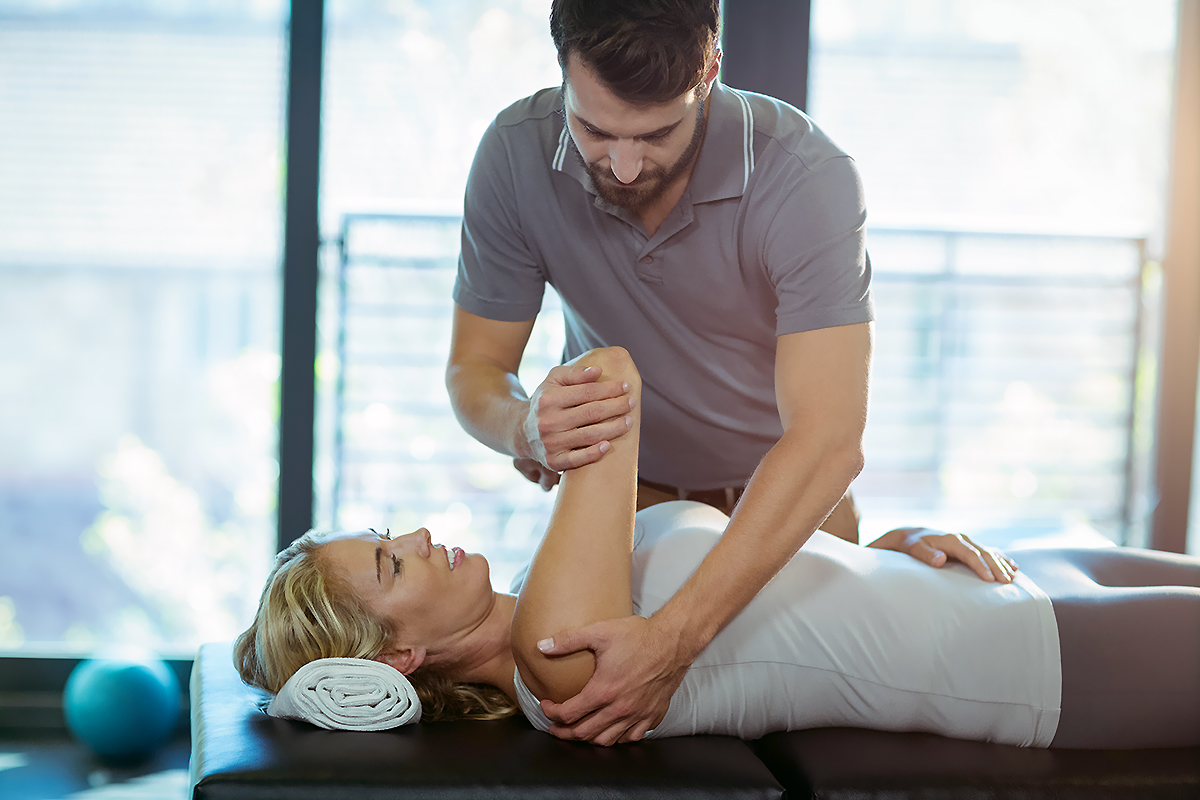How Is Rotator Cuff Pain Treated?
Rotator cuff pain can be treated using RICE. Rest, ice, compression, and elevation work together to reduce shoulder pain. So, when done right after the injury. Once swelling and pain are reduced, you can move the arm better. Therefore, exercising is a great way to heal at this point. In addition, they also prevent further damage or frozen shoulder.
So, depending on the injury, you can add heavier weights. Therefore, strengthening the joint to prevent future damage.
Exercises for Rotator Cuff Pain
Exercise is the best bet when it comes to rotator cuff pain. Therefore, strengthening the joint. So, the five best exercises for rotator cuff injuries are:
1. Doorway stretch
- Stand in an open doorway.
- Then, stretch your arms out to the side.
- Grip the sides of the doorway at shoulder height.
- Lean forward until you feel a stretch.
- Keep your back straight and shift weight to your toes.
- Make sure not to overstretch.
2. Side-lying external rotation
- Lie on the side opposite side of the injured arm.
- Then, bend the elbow of the injured arm 90 degrees. Rest it on your side, your forearm across your stomach.
- Hold a small dumbbell in that hand. Keep your elbow on your side as you lift the weight. Stop rotating when you feel any strain.
- Hold this for a few seconds, then return to the start position.
- Do 3 sets of 10 raises, three times per day.
3. High-to-low rows
- Attach a resistance band to something sturdy at shoulder height.
- Then, get down on one knee. The raised knee should be the one opposite your injured arm. Rest your uninjured arm on your knee.
- Grab the band using the injured arm. Lift your elbow towards your body. Keep your back straight and bring your shoulder blades together.
- Return to start position and repeat 3 sets of 10 pulls.
4. Reverse fly
- Now, stand with knees slightly bent and your back straight. Slowly bend forward at the waist.
- Hold a lightweight in each hand. Raise your arms up and then away from your body. Do not lock your elbow and bring your blades together.
- Return to the start position. Repeat 3 sets of 10 raises.
5. Lawnmower pull
- Stand with your feet shoulder-width apart. Place a resistance band under the foot opposite of your injured arm. Hold the other end using your injured arm. The band will be diagonal across the body.
- Keep one hand on your hip as you slowly bend at the waist. Do not lock your knees. The hand holding the band will be parallel to the opposite knee.
- Straighten upright, pulling your elbow across. Like, starting a lawnmower. Your shoulders should be relaxed. Then, squeeze your shoulder blades as you stand.
- Repeat this for 3 sets of ten pulls.
When to See a Doctor
Although these are great exercises for building strength. But they are normally helpful after minor injuries. However, a recurrent injury will require medical attention. So, it’s ideal to seek help from your doctor if:
- You have severe pain or deep aches.
- There is swelling.
- It is hard to raise your arm.
- If it is difficult to sleep on your arm.
Are you searching for a rotator cuff pain management specialist? We have both pain management doctors and also shoulder specialists. We are here to help. So, call us at 888-409-8006.



